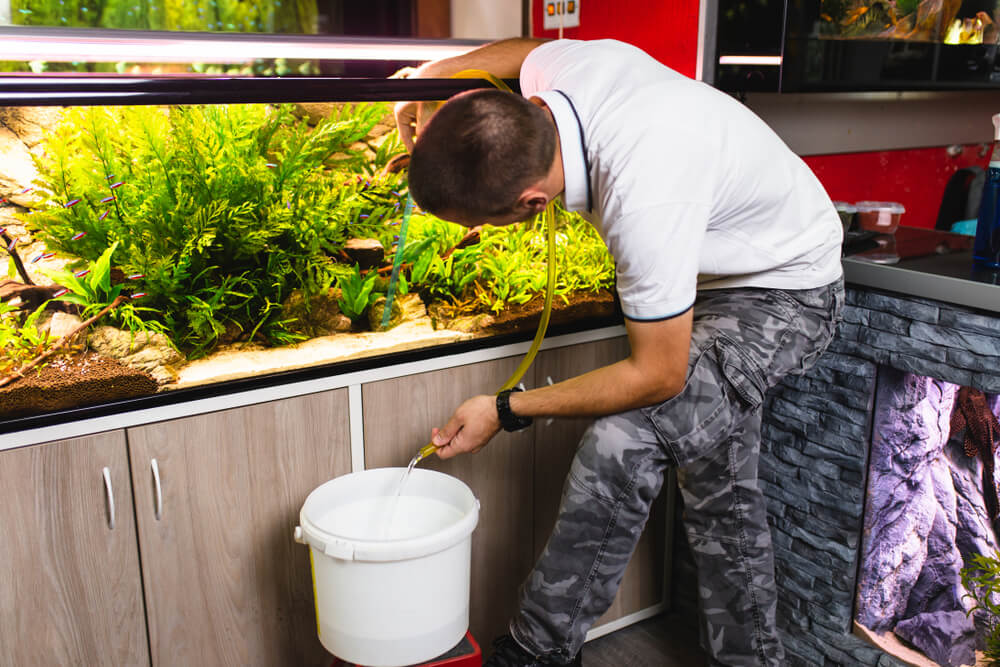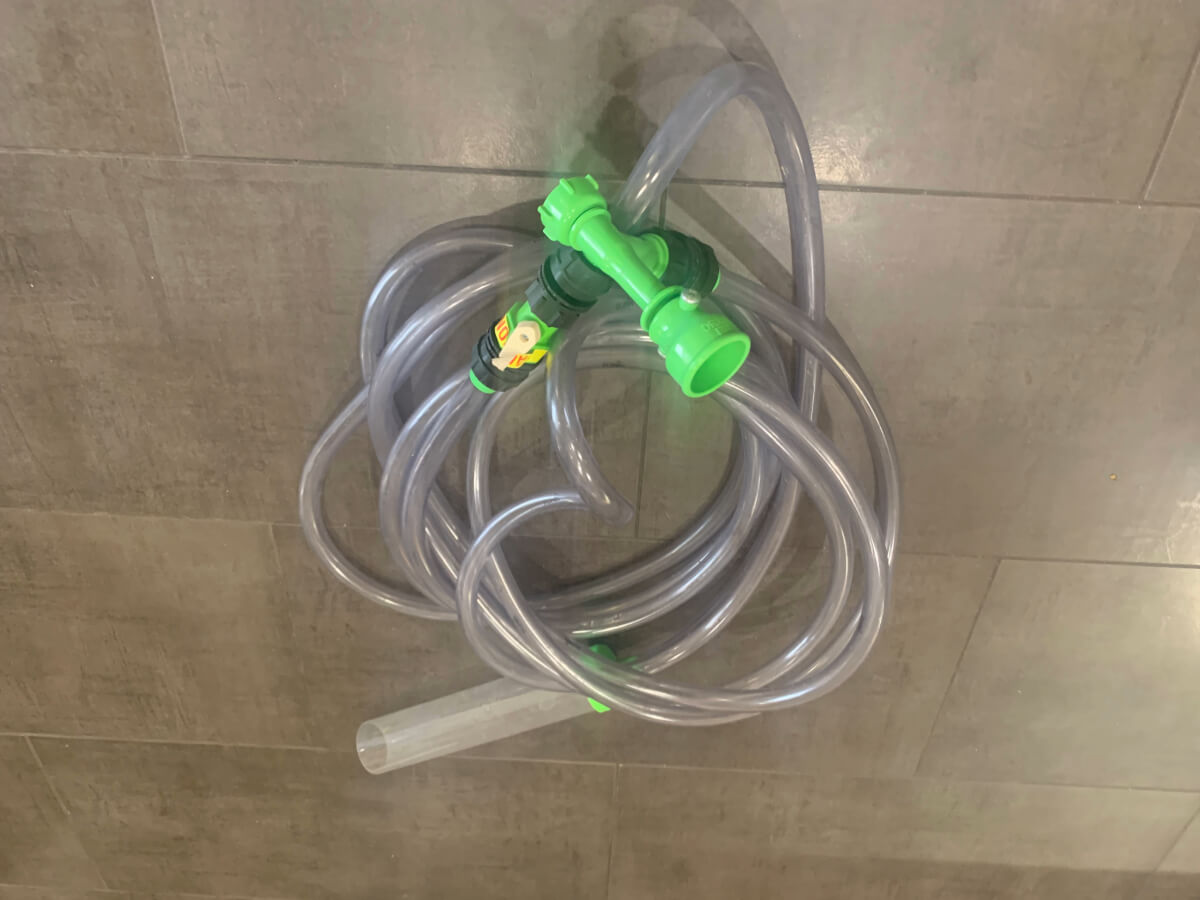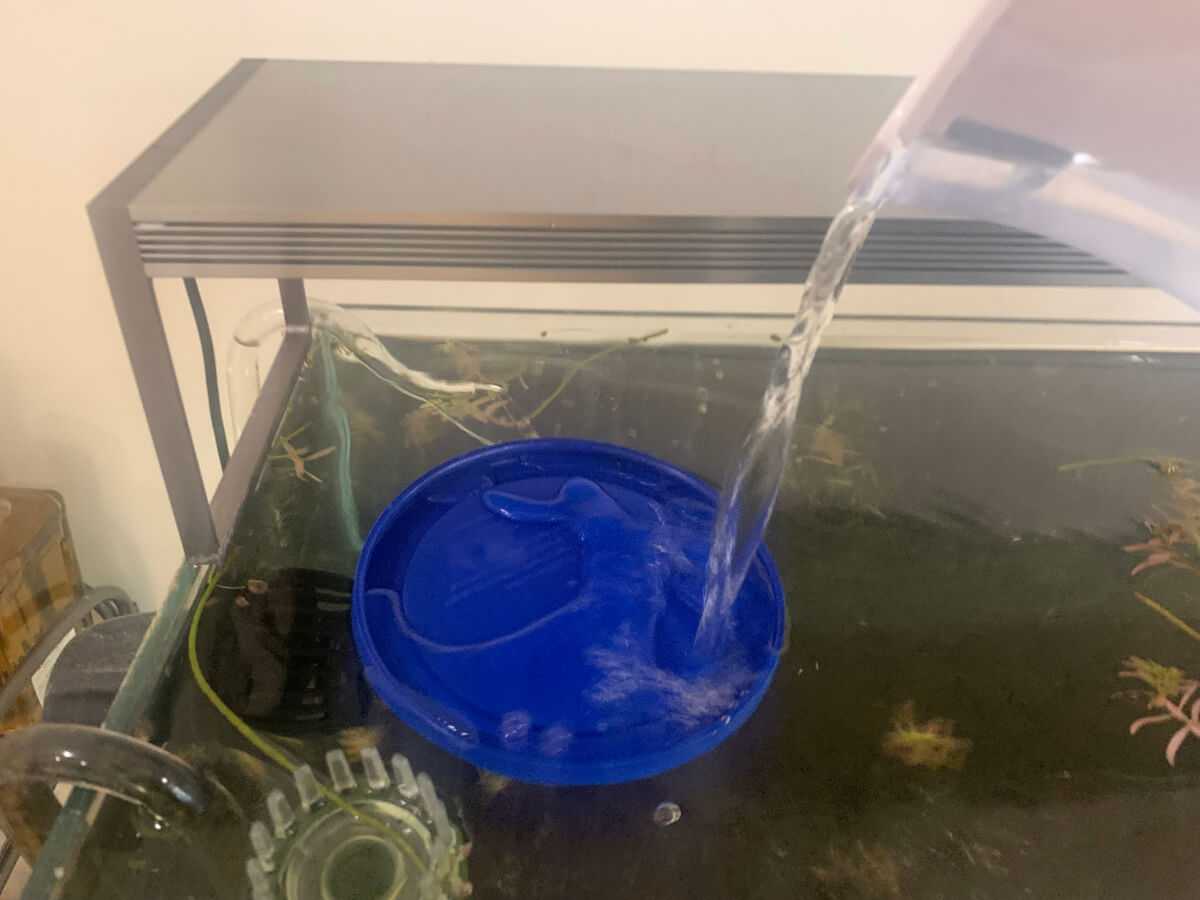How to Perform an Aquarium Water Change: 5 Steps
Posted by on 03/05/2024
In nature, bodies of water are naturally filtered via organisms, UV exposure, water movement, air pressure, rainfall, and the earth's lithosphere.
While aquarium hobbyists don't have all of these forces at their disposal, we employ water changes to keep our tanks in tip-top shape. Performing routine water changes is an essential part of the aquarium hobby, therefore you must understand how to perform one correctly.
In this post, we'll cover how to perform an aquarium water change for a freshwater tank, so that you can keep your aquarium inhabitants happy and healthy.
December's Giveaways on Light Fish
Why Perform Aquarium Water Changes?
Aquarium water changes are used to prevent ammonia, nitrite, and nitrate buildup in both new and established aquariums. These water changes also give the hobbyist time to perform additional routine maintenance, such as scrubbing off algae, servicing their filters, or re-configuring their tanks.
Over time, fish waste and uneaten food will produce ammonia, a gaseous compound that is lethal to tank inhabitants, making water changes an essential part of fishkeeping

How Often to Perform a Water Change
Hobbyists should perform 50% water changes at least once a week.
There are a few factors that impact the amount volume and frequency of water changes. The amount of livestock in your tank, the amount of uneaten food, and the amount of natural aquatic plants all play a factor. If you have a small amount of livestock and are disciplined in not overfeeding your fish, you may be able to go 1-2 weeks without performing a water change or you may be able to perform a weekly water change with less volume. Live aquatic plants will naturally improve the water quality in your tank, particularly if your aquarium is heavily planted. You can experiment with a water test kit to get a feel for how much ammonia, nitrite, and nitrate accumulate in your tank over 1 week, and adjust accordingly.
Still, the 50% weekly water change is the golden rule for a disease and healthy aquarium.
How To Perform a Water Change
Now that we've covered the purpose and frequency of water changes, let's get into the details. Luckily for hobbyists, performing a water change isn't very difficult, and there are plenty of tools on the market to make the job a bit easier.
Turn Off Filters
The first step in performing an aquarium water change is to turn off your filters. This creates a safe environment in case things get a bit messy (we are dealing with water and electricity after all!) Besides safety, turning off your filters will prevent air from getting trapped inside your filter. If you leave your aquarium filter on during a water change, once water levels begin to drop, your filter may suck in air, impacting performance. This is particularly common with canister filters, such as the eheim 2215 and 2217. Don't worry, if air does get trapped, try shaking your filter back and forth a few times to get the trapped air out once you've turned your filter back on!
Determine Volume to Change
This step is extremely important. If you've been good at performing weekly water changes, then the 50% water volume is the perfect amount.
However, if you haven't performed a water change in a few weeks, or worse, months, then you'll need to be a bit more careful. Your tank inhabitants are constantly adapting to your tank's water parameters. Performing a large water change in a short amount of time can be fatal to your tank inhabitants. When performing a water change on a neglected tank, perform a 50% water change, but do it slowly. Do not dump a bucket of tap water directly into your tank. Slowly pour the water over a 10-minute period. You can break things up by replacing 10% of the water every 20 minutes or so if you prefer to play it safe!
This step is extremely important. If you've been good at performing weekly water changes, then the 50% water volume is the perfect amount.
Siphon Water
Now it's time to remove water from your tank! Hobbyists use a tool called a siphon to do so. They are usually cheap, plastic hoses that contain a small flap inside the hose. Hobbyists perform a pumping motion with the hose. On the downward motion of the pump, water rushes past the flap. As the hobbyist moves their arm upward, the flap closes, trapping water in the tube. After enough water is trapped, gravity will kick in, pulling the water downwards, and creating a suction. Aim the water flowing out of your tank into a bucket.
Frustrated hobbyists may resort to "sucking the water" from the siphon, while this is certainly an effective method, you can easily get a mouth full of aquarium water - yuck!
Once you've removed 50% of your tank water, you can dump the dirty tank water down the drain.
One of our favorite tools for performing water changes is the patented Python No Spill Clean and Fill. This tool connects directly to a nearby faucet, removing the need for lugging around buckets of water. If you have a sink nearby, we highly recommend a Python to make your life easier!

Replace Water
After (or while) you've siphoned out 50% of your tank water, you can begin to fill up an additional bucket with tap water. You may need to fill up quite a few buckets of water depending on how much water you've removed from your tank. Then, slowly pour water back into your aquarium until you've refilled your tank.

Apply Dechlorinator (optional)
If you live in a city or a place where tap water is considered hard, you'll want to add a small amount of de-chlorinator after you've refilled your tank. This will remove trace amounts of chlorine from your water supply, which is harmful to fish. Add the appropriate amount of dechlorinator for your tank size.
Hobbyists with soft water, such as those who have well water, do not need to use a dechlorinator.
Conclusion
That wraps up our step-by-step guide to performing water changes. As you can see, performing water changes is an essential part of fishkeeping. Luckily for hobbyists, the process isn't too difficult, and can usually be completed in under an hour!
Now that you've learned the ins and outs of water changes, do you feel more confident in your aquarium abilities? Let us know in the comments, and be sure to visit our marketplace where you can buy and sell anything related to aquatics with other hobbyists.
December's Giveaways on Light Fish


